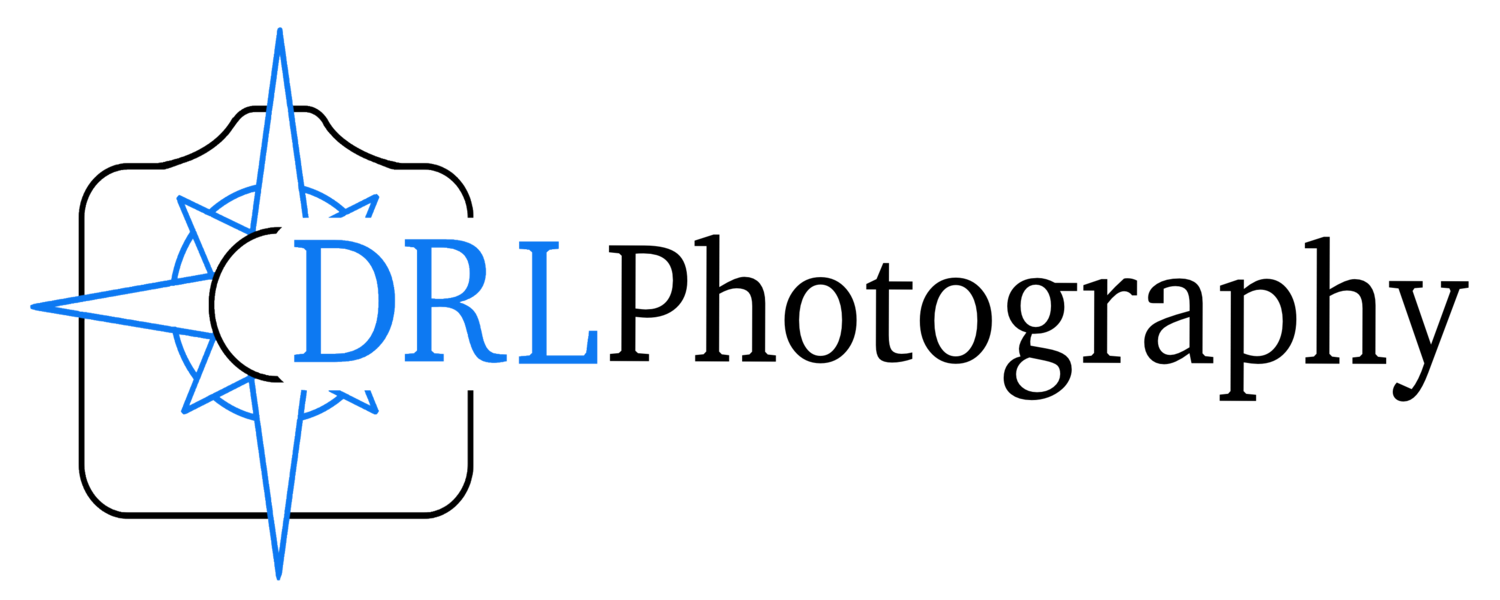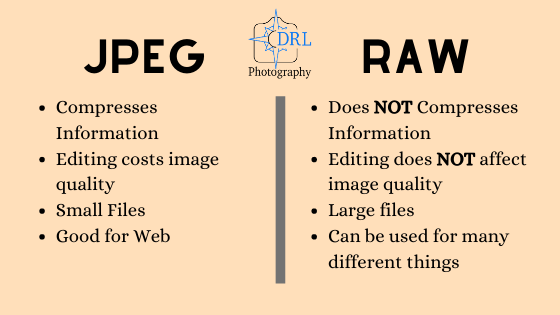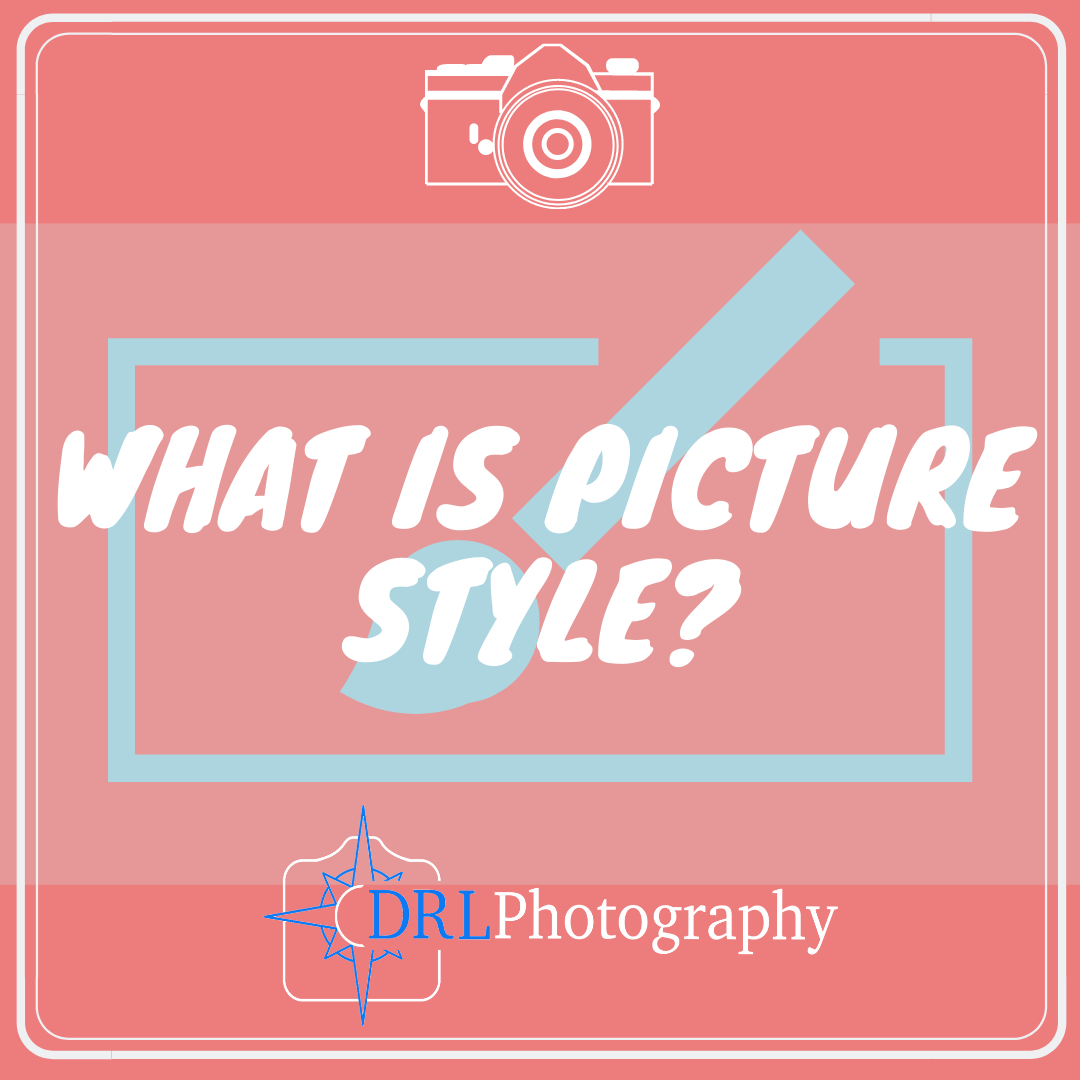RAW vs JPEG - Why You Should be Using RAW!
DRL Photography is a participant in the Amazon EU Associates Program, an affiliate advertising program designed to provide a means for sites to earn advertising fees by advertising and linking to Amazon.co.uk
This topic has been covered by many but I wanted to throw my hat in to the ring and talk about the difference between these 2 file systems.
It’s a really important point that a lot of amateur photographers have no idea about.
Up until a few years ago I had no idea what the hell RAW was. I was told by my friend Peter Greenstreet to shoot in RAW but I didn’t understand what the hell he was talking about.
So I want to try and explain what is the real meaning of JPEG and RAW and what you need to know for practical reasons, such as when you should in fact use JPEGs.
What is a JPEG?
Let’s begin by looking at what a JPEG is, which much like ISO received it’s name as an acronym for a organisation (if you haven’t read my article on ISO, you should), in this case JPEG comes from the Joint Photographic Experts Group (a silly name in my opinion). The creators wrote an algorithm that compresses the information that has been captured by your camera in to a smaller file.
What is RAW?
On the other hand RAW is not an acronym, in fact it is a misconception that has pervaded the photography world.
There isn’t one single raw format, in reality there are dozens, and most camera manufacturers have their own file format.
The closest meaning for the term RAW would be “read and write” because where JPEGs compress the image, raw formats have all of the data available for you to be able to not only “read” it, i.e. see the file, but also to “write” it, i.e. adjust the file as you see fit.
That’s sort of how I always think of raw files. The key thing to note is that raw is uncompressed meaning large image files whereas JPEG is compressed so small files.
Why is Uncompressed Better?
Uncompressed images mean that all of the data that your camera recorded is available for you to adjust.
On the other hand using a compressed file format, like JPEG, means that every adjustment you make degrades the image and causes damage to your files!
This is the most important part that you need to take notice of!
In other words, if you do any editing to JPEG files, anything from adjusting white balance to cropping, you will damage the whole file and it will result in an image of a lesser quality.
This is really important!
Every adjustment you make to a JPEG will eventually result in damage to your image and therefore your image becomes less valuable to you and to anyone else.
When to Use JPEGs?
Obviously at some point you are going to need to use JPEG files, it’s inevitable.
But what you should be doing is using raw in your camera and then once those pictures are on your computer and you have edited them as you please, then create JPEG copies of your images.
If you want to post your pictures on the internet or you want to reduce your file storage, then you will need JPEGs. But the important point is to make JPEGs on the computer after you have taken the picture in raw.
All of the images on my website are JPEGs that I have created after I’ve done some editing, and in fact I’ve compressed them as small as I can to make page loading faster.
But I keep the master raw file on an external hard drive such as this Seagate 4TB HDD (affiliate link), that way if I ever want to re-edit an image or I want a better quality JPEG, or if I want a JPEG with certain characteristics then I am able to create a new file without losing any image quality.
Don’t get me wrong, this is all my own opinion, although you will be hard pressed to find a photographer that says they only ever shoot in JPEG.
Some do use the ability to shoot in both raw and JPEG file formats to give them some flexibility. And, as I understand it, this is really useful for when shooting events like a wedding, as you have something there immediately to show the bride and even give them a copy straight away.
That would be a really useful way of showing off your editing skills and earning a little extra producing amazing final results from the raw files.
So it is possible to set your camera to record both formats, and at one point I did this but I found that 9/10 times that what I needed was the raw file to polish the image, and those in camera JPEGs just took up space on my memory card and my hard drive.
Conclusion
The important parts to note from this article are that JPEGs compress information and raw files do not.
Uncompressed files give you greater flexibility and creative freedom in post processing software such as Lightroom and Photoshop.
JPEGs lose quality with every edit that you make, raw files do not lose any quality no matter how many times you edit their data. If you want to post on the web, shoot in raw but export as JPEG and use JPEGs to upload online.
If you want, you can make your camera save both a compressed file and a raw uncompressed file, but I’ve found that you will be using the raw file a lot more and it is a lot more versatile.
If you are a little nervous about editing software then take the time to learn it, there are a lot of youtube videos out there and plenty of courses but in the long run if you start using raw files now, you will be grateful that you them on your computer so that you can re-edit them as you learn new techniques.
Who knows maybe that picture that you thought was not good can in fact be salvaged when edited properly, and the only way you will ever know that is if you have that file in raw!
Related Articles
Written by Daniel Long
Daniel Long created DRL Photography as a place to showcase his work as a photographer. Daniel has learnt a lot about photography and wishes to impart this knowledge with you, although the world is an ever changing place and he always says “you can never learn everything.” So as he makes his way, he continues to learn knew techniques, skills and information about photography. He focuses on Landscape and Wildlife photography and Daniel has a special focus on Scotland, his home away from home. As well as writing about photography and taking pictures out in the field, Daniel offers guided photography days so he can share his knowledge and locations in an effort to give his clients the best opportunities possible. Have a browse around this website to see his images, guided experiences and articles about photography. If you have any questions don’t hesitate to get in contact.



















